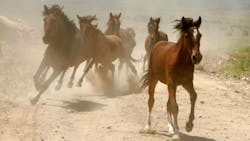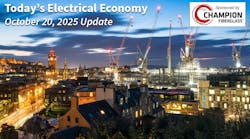IHS Global Insight Economists See 2017 Growth But Question Impact of ‘Animal Spirits’ on Economy
The term “animal spirits” was first used by John Maynard Keynes to explain investment behavior. Its meaning has since been expanded to describe consumer and business behavior, which can better be understood in light of “soft” indicators (e.g., sentiment and confidence), compared to “hard” indicators (e.g., income, profits, interest rates, etc.).
In the wake of the recent U.S. presidential election, there has been a noticeable unleashing of animal spirits. Both consumer and business optimism have surged — and stock market indexes have hit record highs. Some of this may be a “relief rally” after a particularly contentious election cycle. However, in the case of business optimism and the stock market rally, the revival of animal spirits has a lot to do with the expectation that the incoming Trump administration and a Republican-led Congress will cut taxes, roll back regulations, and make it easier to repatriate profits.
The optimistic view is that both the expectation and reality of a more business-friendly environment could translate into stronger growth in capital spending, which, in turn, could help boost productivity growth. Likewise, rising stock prices could increase household wealth and consumer spending even more.
A less optimistic perspective focuses on three key arguments. First, and perhaps most important, the actual policies enacted by the incoming president and Congress may be less generous than current expectations, as the legislating process inevitably involves many compromises. Second, the link between sentiment/confidence and spending is tenuous. Finally, in the case of consumers, the impact of wealth on spending is small (around three cents on the dollar).
Even assuming that the revival of animal spirits does translate into higher spending, two “hard” forces are already undermining some of the positive impacts on the economy. Long-term interest rates have risen by 70 basis points since the election and are projected by IHS Global Insight to advance another 30 basis points in the coming year.
This will be a drag on consumer spending, housing activity, and business capital spending. Just as important is the rise in the value of U.S. dollar, which has climbed 4.5% on a trade-weighted basis since the election (4.8% since the beginning of 2016), and is forecast to rise another 3.0% over 2017. This will be a prolonged hindrance to net exports.
That said, IHS Global Insight forecasts that there will be a pickup in the pace of the U.S. recovery, from 1.6% in 2016 to 2.3% in 2017 — not so much because of animal spirits, but because of an easing in both the recent inventory correction and the rout in energy-sector investment. Any policy-related increase in real GDP growth is most likely to show up in late 2017 and 2018, when the expected personal and corporate tax cuts take effect, and when the scope of actual deregulation becomes apparent. IHS Global Insight projects 2018 growth at 2.6%.
— Nariman Behravesh, IHS Markit Chief Economist; Sara Johnson, IHS Global Insight Senior Research Director; and Patrick Newport, IHS Director


